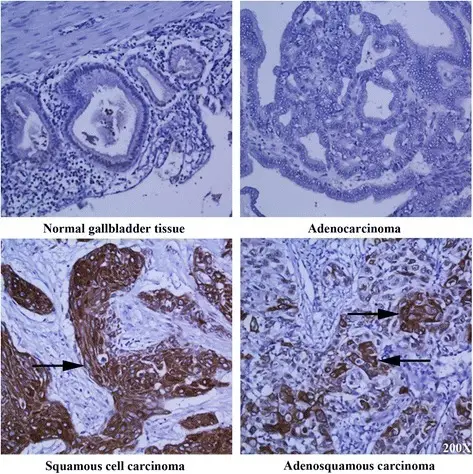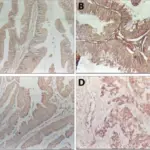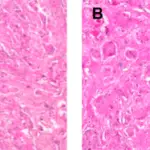Squamous cell carcinoma of the gallbladder is a rare histopathologic subtype of gallbladder carcinomas.
What is the Pathology of Squamous Cell Carcinoma of the Gallbladder?
The pathology of squamous cell carcinoma of the gallbladder is:
-Etiology: The cause of squamous cell carcinoma of the gallbladder isn’t clear, but there are some known risk factors which include which include age and sex, gallstones and inflammation, family history of gallbladder cancer, smoking, porcelain gallbladder, primary sclerosing cholangitis, and obesity.
-Pathogenesis: The sequence of events that lead to squamous cell carcinoma of the gallbladder is uncertain and usually is thought to develop in response to the irritation resulting in squamous metaplasia.
-Morphology: The morphology associated with squamous cell carcinoma of the gallbladder shows vauge abdminal symptoms.
-Histology: The histology associated with squamous cell carcinoma of the gallbladder shows squamous differentiation without any recognizable invasive glandular component. Squamous cell carcinomas exhibit abundant keratinization with pearl formation, prominent intercellular bridges, and the presence of keratohyaline granules with numerous dyskeratotic cells.
How does Squamous Cell Carcinoma of the Gallbladder Present?
Patients with squamous cell carcinoma of the gallbladder typically are female present at the age range of 50–71 years-old. The symptoms, features, and clinical findings associated with squamous cell carcinoma of the gallbladder include abdominal pain, nausea, vomiting, and fever.
How is Squamous Cell Carcinoma of the Gallbladder Diagnosed?
Squamous cell carcinoma of the gallbladder is diagnosed with biopsy.
How is Squamous Cell Carcinoma of the Gallbladder Treated?
Squamous cell carcinoma of the gallbladder is treated with radical resection.
What is the Prognosis of Squamous Cell Carcinoma of the Gallbladder?
The prognosis of squamous cell carcinoma of the gallbladder is fair.



